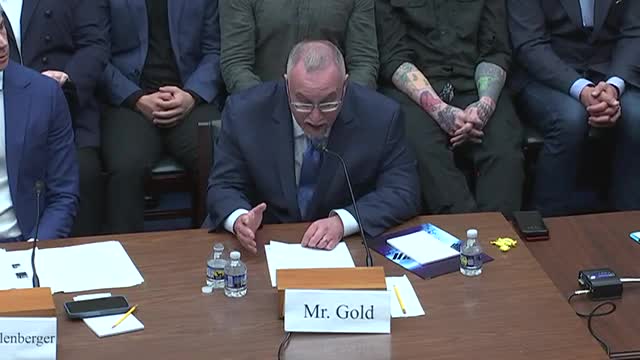NASA urged to combat UAP stigma and unlock mysteries
November 13, 2024 | Oversight and Reform: House Committee, Standing Committees - House & Senate, Congressional Hearings Compilation
This article was created by AI summarizing key points discussed. AI makes mistakes, so for full details and context, please refer to the video of the full meeting. Please report any errors so we can fix them. Report an error »

In a recent government meeting focused on Unidentified Aerial Phenomena (UAP), experts emphasized the need to combat the stigma surrounding UAP research to facilitate scientific inquiry. Members of the NASA UAP Independent Study Team reported facing ridicule and threats for their involvement in UAP studies, highlighting the challenges posed by societal perceptions.
The discussion underscored NASA's potential role in legitimizing UAP research. With its strong public image, NASA could host symposia and engage in existing panels to encourage serious scientific discourse on UAP. The agency's extensive archives could be leveraged to develop artificial intelligence tools capable of identifying anomalous phenomena, which may yield insights not only into UAP but also into other scientific areas like meteorology.
Furthermore, the meeting revealed a lack of clear reporting mechanisms for civilian pilots witnessing UAP. The independent study team proposed utilizing NASA's Aviation Safety Reporting System (ASRS) to confidentially collect UAP sightings. This system, which has amassed nearly two million reports over 47 years, could serve as a valuable resource for gathering data on UAP incidents.
The conversation also touched on the broader implications of UAP research, suggesting that anomalies have historically driven significant scientific advancements. Participants urged the subcommittees to recognize the wealth of data that could be generated through collaboration between NASA, the FAA, and commercial aviation sectors.
As the meeting concluded, there was a collective call for openness in exploring UAP, emphasizing that the pursuit of knowledge should not be hindered by fear or stigma. The sentiment echoed the belief that understanding these phenomena could lead to groundbreaking discoveries, reinforcing the notion that \"the truth is out there.\"
The discussion underscored NASA's potential role in legitimizing UAP research. With its strong public image, NASA could host symposia and engage in existing panels to encourage serious scientific discourse on UAP. The agency's extensive archives could be leveraged to develop artificial intelligence tools capable of identifying anomalous phenomena, which may yield insights not only into UAP but also into other scientific areas like meteorology.
Furthermore, the meeting revealed a lack of clear reporting mechanisms for civilian pilots witnessing UAP. The independent study team proposed utilizing NASA's Aviation Safety Reporting System (ASRS) to confidentially collect UAP sightings. This system, which has amassed nearly two million reports over 47 years, could serve as a valuable resource for gathering data on UAP incidents.
The conversation also touched on the broader implications of UAP research, suggesting that anomalies have historically driven significant scientific advancements. Participants urged the subcommittees to recognize the wealth of data that could be generated through collaboration between NASA, the FAA, and commercial aviation sectors.
As the meeting concluded, there was a collective call for openness in exploring UAP, emphasizing that the pursuit of knowledge should not be hindered by fear or stigma. The sentiment echoed the belief that understanding these phenomena could lead to groundbreaking discoveries, reinforcing the notion that \"the truth is out there.\"
View full meeting
This article is based on a recent meeting—watch the full video and explore the complete transcript for deeper insights into the discussion.
View full meeting